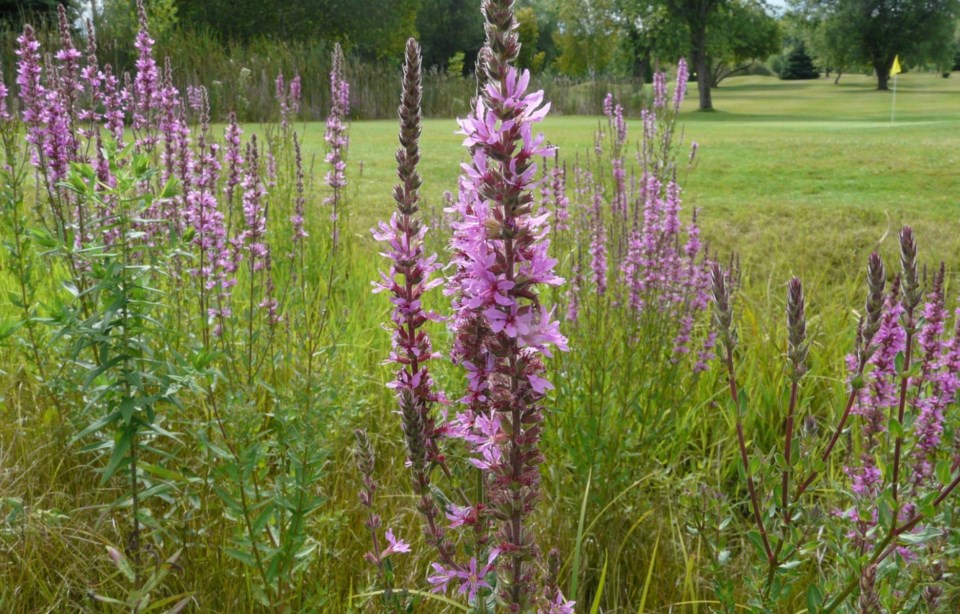Just as leafy spurge looks harmless but is really an invasive species, purple loosestrife is another attractive-looking plant that can do more damage to the local environment.
Purple loosestrife is a wetland invasive species that has taken over the river systems in Eastern Canada. While it looks like a beautiful flower, it is extremely aggressive and can wipe out cattails and other native flora. If its seeds spread, they can choke out wetlands.
Purple loosestrife is native to Europe and Asia and was brought to North America in the early 19th century. It was likely introduced when its seeds were included in soil used as ballast in European sailing ships and discarded in North America.
The plant is still used in flower gardens and occasionally sold in nurseries.
This invasive plant can grow to one-and-a-half metres in height, while it flowers pink-purple from May to June. Its leaves are in pairs or whorls of three, lance-shaped and oppositely arranged on the stems, which are woody and square.
Carmen Kaweski, executive director of the Moose Jaw River Watershed Stewards (MJRWS), explained that her organization has found large patches of purple loosestrife near the old hospital site and across the highway adjacent to the Gibson Energy refinery.
To combat this plant, the Moose Jaw River Watershed Stewards will work with Gibson Energy during a one-day plant pull on Tuesday, Aug. 9, starting at 7 a.m. The group will meet at the bridge near Manitoba Street East and Lorne Avenue and comb the riverbank pulling the invasive plant.
This is the third year that both parties have collaborated on this project. Residents are welcome to volunteer.
Pulling out the plant is the best way to eliminate it, while purple loosestrife beetles can reduce the plant’s growth, Kaweski said. However, if the water is too high, the beetles will not survive or return the next year.
“They thrive in areas that are dry,” she continued. “We wanted to do a beetle release, but there were no good spots. We have released some in the past.”
Kaweski added that keeping this invasive problem in the public eye can encourage residents to be more vigilant about the purple loosestrife plant and help control its spread.
Visit mjriver.ca for more information.
According to the Nature Conservancy of Canada, residents can eliminate this plant by:
- Disposing of yard waste properly. Dumping yard waste in natural areas introduces alien invasive species that thrive and spread. Even leaf piles can be problematic, as they smother native vegetation
- Planting native species in your garden. Many beautiful native species attract butterflies and birds, making a garden twice as beautiful. Native species are also adapted to the climate and often require less rigorous care than exotic species
- Reporting sightings of invasive plants to the local stewardship council. Finding these invasions early is important to eradicating them
- Cleaning your shoes or bicycle tires when moving between designated trails in different areas. Invasive plants are often spread accidentally from seeds stuck in treads
Visit www.natureconservancy.ca/en/ for more information.




